Refine search
No keyword found to refine search
keywords EN
Places
Names
878 documents found
| 1 | 15 |
Documents per page :

The Samurai of Fukushima / Portraits
Noriko Takasugi / Le Pictorium
LePictorium_0201745.pdf
The Samurais of Fukushima by Noriko Takasugi
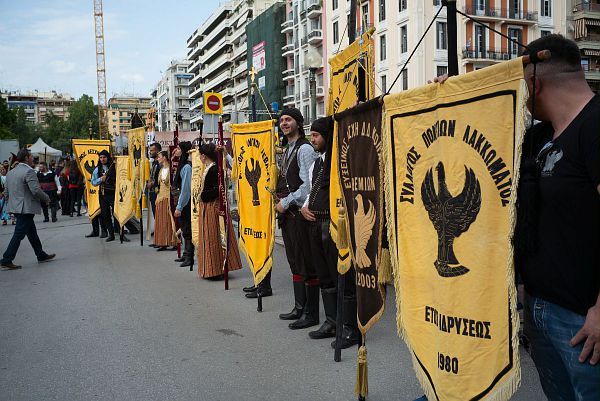
99th commemoration of the Pontic genocide. Thessaloniki Greece 19/05/18
Pierre Berthuel / Le Pictorium
LePictorium_0181351.jpg
The 99th commemoration of the greek genocide of Pontos. Parade and paying honor to the 353000 greeks dead in the Ottoman Empire during the tail end of the World War I.
During the 99th commemoration of the greek "Pontic Genocide" 19/05/18 Thessaloniki Greece.
During the 99th commemoration of the greek "Pontic Genocide" 19/05/18 Thessaloniki Greece.
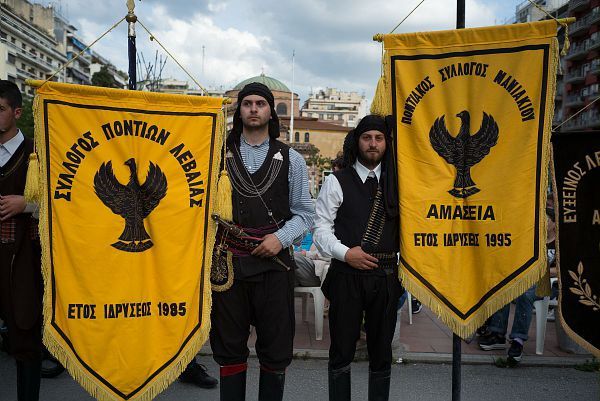
99th commemoration of the Pontic genocide. Thessaloniki Greece 19/05/18
Pierre Berthuel / Le Pictorium
LePictorium_0181352.jpg
The 99th commemoration of the greek genocide of Pontos. Parade and paying honor to the 353000 greeks dead in the Ottoman Empire during the tail end of the World War I.
During the 99th commemoration of the greek "Pontic Genocide" 19/05/18 Thessaloniki Greece.
During the 99th commemoration of the greek "Pontic Genocide" 19/05/18 Thessaloniki Greece.
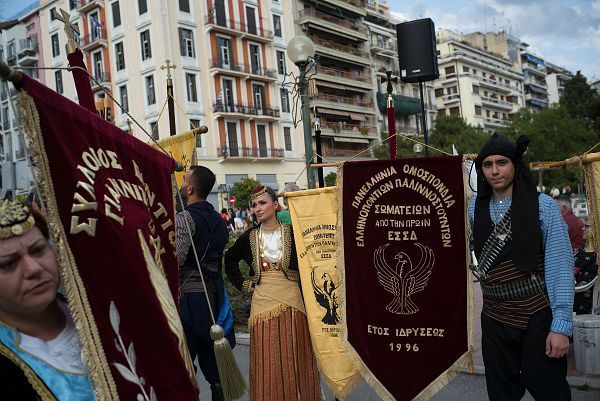
99th commemoration of the Pontic genocide. Thessaloniki Greece 19/05/18
Pierre Berthuel / Le Pictorium
LePictorium_0181353.jpg
The 99th commemoration of the greek genocide of Pontos. Parade and paying honor to the 353000 greeks dead in the Ottoman Empire during the tail end of the World War I.
During the 99th commemoration of the greek "Pontic Genocide" 19/05/18 Thessaloniki Greece.
During the 99th commemoration of the greek "Pontic Genocide" 19/05/18 Thessaloniki Greece.
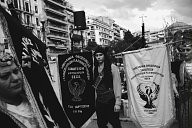
99th commemoration of the Pontic genocide. Thessaloniki Greece 19/05/18
Pierre Berthuel / Le Pictorium
LePictorium_0181354.jpg
The 99th commemoration of the greek genocide of Pontos. Parade and paying honor to the 353000 greeks dead in the Ottoman Empire during the tail end of the World War I.
During the 99th commemoration of the greek "Pontic Genocide" 19/05/18 Thessaloniki Greece.
During the 99th commemoration of the greek "Pontic Genocide" 19/05/18 Thessaloniki Greece.
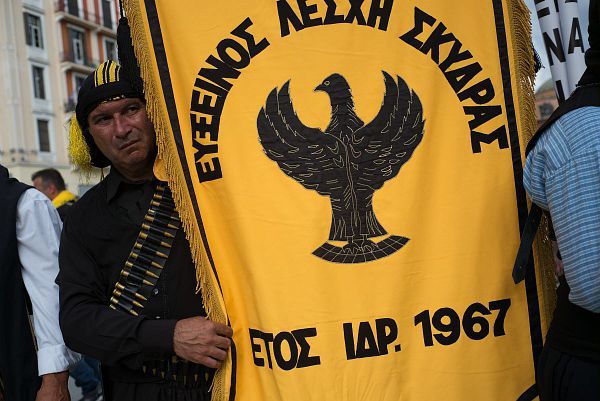
99th commemoration of the Pontic genocide. Thessaloniki Greece 19/05/18
Pierre Berthuel / Le Pictorium
LePictorium_0181355.jpg
The 99th commemoration of the greek genocide of Pontos. Parade and paying honor to the 353000 greeks dead in the Ottoman Empire during the tail end of the World War I.
During the 99th commemoration of the greek "Pontic Genocide" 19/05/18 Thessaloniki Greece.
During the 99th commemoration of the greek "Pontic Genocide" 19/05/18 Thessaloniki Greece.
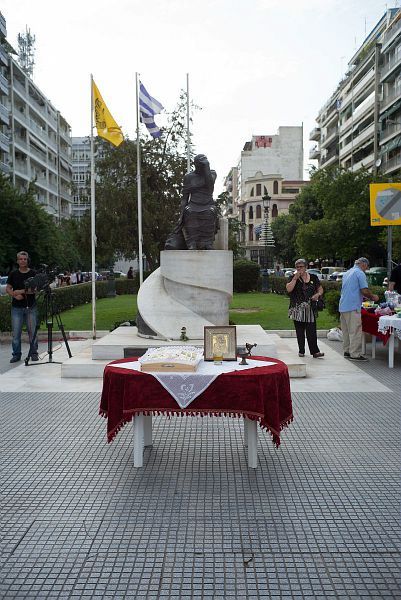
99th commemoration of the Pontic genocide. Thessaloniki Greece 19/05/18
Pierre Berthuel / Le Pictorium
LePictorium_0181356.jpg
The 99th commemoration of the greek genocide of Pontos. Parade and paying honor to the 353000 greeks dead in the Ottoman Empire during the tail end of the World War I.
During the 99th commemoration of the greek "Pontic Genocide" 19/05/18 Thessaloniki Greece.
During the 99th commemoration of the greek "Pontic Genocide" 19/05/18 Thessaloniki Greece.
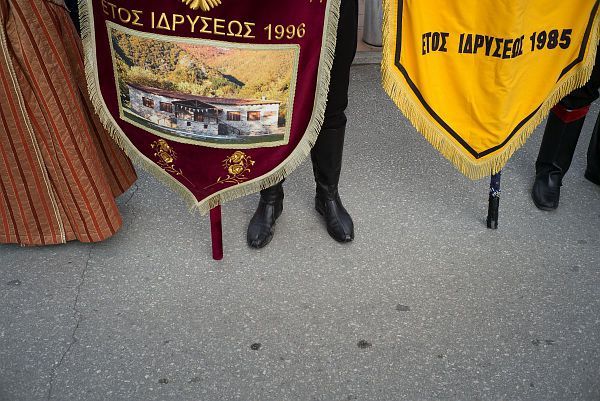
99th commemoration of the Pontic genocide. Thessaloniki Greece 19/05/18
Pierre Berthuel / Le Pictorium
LePictorium_0181357.jpg
The 99th commemoration of the greek genocide of Pontos. Parade and paying honor to the 353000 greeks dead in the Ottoman Empire during the tail end of the World War I.
During the 99th commemoration of the greek "Pontic Genocide" 19/05/18 Thessaloniki Greece.
During the 99th commemoration of the greek "Pontic Genocide" 19/05/18 Thessaloniki Greece.
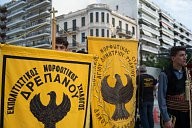
99th commemoration of the Pontic genocide. Thessaloniki Greece 19/05/18
Pierre Berthuel / Le Pictorium
LePictorium_0181358.jpg
The 99th commemoration of the greek genocide of Pontos. Parade and paying honor to the 353000 greeks dead in the Ottoman Empire during the tail end of the World War I.
During the 99th commemoration of the greek "Pontic Genocide" 19/05/18 Thessaloniki Greece.
During the 99th commemoration of the greek "Pontic Genocide" 19/05/18 Thessaloniki Greece.
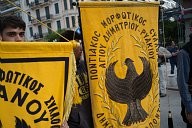
99th commemoration of the Pontic genocide. Thessaloniki Greece 19/05/18
Pierre Berthuel / Le Pictorium
LePictorium_0181359.jpg
The 99th commemoration of the greek genocide of Pontos. Parade and paying honor to the 353000 greeks dead in the Ottoman Empire during the tail end of the World War I.
During the 99th commemoration of the greek "Pontic Genocide" 19/05/18 Thessaloniki Greece.
During the 99th commemoration of the greek "Pontic Genocide" 19/05/18 Thessaloniki Greece.
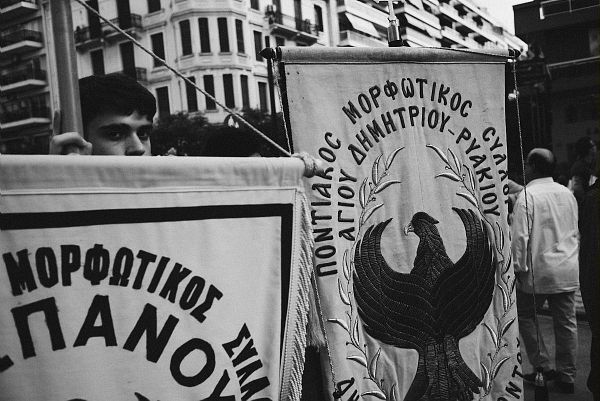
99th commemoration of the Pontic genocide. Thessaloniki Greece 19/05/18
Pierre Berthuel / Le Pictorium
LePictorium_0181360.jpg
The 99th commemoration of the greek genocide of Pontos. Parade and paying honor to the 353000 greeks dead in the Ottoman Empire during the tail end of the World War I.
During the 99th commemoration of the greek "Pontic Genocide" 19/05/18 Thessaloniki Greece.
During the 99th commemoration of the greek "Pontic Genocide" 19/05/18 Thessaloniki Greece.
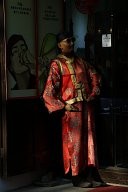
Trip in China
Jean-Paul Lozouet / Le Pictorium
LePictorium_0179762.jpg
Suzhou, Jiangsu, model dressed in the traditional Chinese way

Procession of "Sanch"
Pierre Berthuel / Le Pictorium
LePictorium_0178696.jpg
The girls and their parade costumes come out of the church of St. James to follow the cortege and the penitents. The red "Caparutxa" symbolize the regidores "the condemned to death" accompanied by the black "Caparutxa", the penitents.
The cortege of the penitents marches in the city of Perpignan for procession of the Sanch
The cortege of the penitents marches in the city of Perpignan for procession of the Sanch
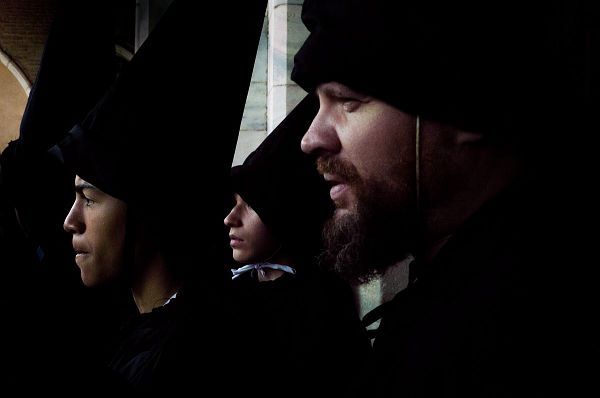
Procession of "Sanch"
Pierre Berthuel / Le Pictorium
LePictorium_0178697.jpg
The red "Caparutxa" symbolize the regidores "the condemned to death" accompanied by the black "Caparutxa", the penitents.
The cortege of the penitents marches in the city of Perpignan for procession of the Sanch
The cortege of the penitents marches in the city of Perpignan for procession of the Sanch
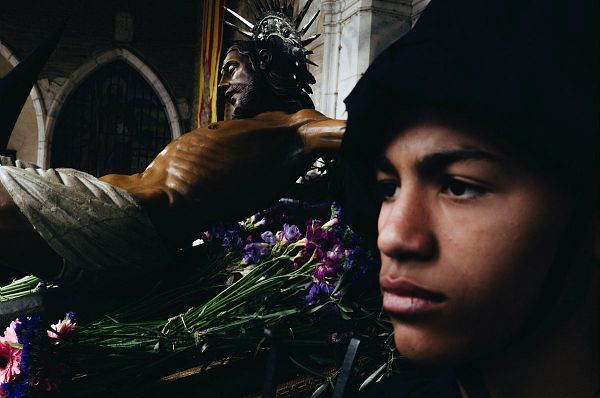
Procession of "Sanch"
Pierre Berthuel / Le Pictorium
LePictorium_0178698.jpg
The red "Caparutxa" symbolize the regidores "the condemned to death" accompanied by the black "Caparutxa", the penitents.
The cortege of the penitents marches in the city of Perpignan for procession of the Sanch
The cortege of the penitents marches in the city of Perpignan for procession of the Sanch

Procession of "Sanch"
Pierre Berthuel / Le Pictorium
LePictorium_0178699.jpg
The senior officers of the sanch procession leave the church of Saint Jacques at the end of the cortege.
The cortege of the penitents marches in the city of Perpignan for procession of the Sanch
The cortege of the penitents marches in the city of Perpignan for procession of the Sanch

Procession of "Sanch"
Pierre Berthuel / Le Pictorium
LePictorium_0178700.jpg
The black "Caparutxa", the penitents, follow the red "Caparutxa" that symbolize the regidores "the condemned to death" in the streets of Perpignan.
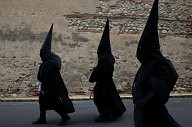
Procession of "Sanch"
Pierre Berthuel / Le Pictorium
LePictorium_0178701.jpg
The black "Caparutxa", the penitents.
The cortege of the penitents marches in the city of Perpignan for procession of the Sanch
The cortege of the penitents marches in the city of Perpignan for procession of the Sanch
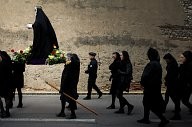
Procession of "Sanch"
Pierre Berthuel / Le Pictorium
LePictorium_0178702.jpg
Women carry a "Misteris" which is a representation of Christ or Mary.
The cortege of the penitents marches in the city of Perpignan for procession of the Sanch.
The cortege of the penitents marches in the city of Perpignan for procession of the Sanch.
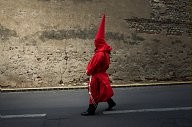
Procession of "Sanch"
Pierre Berthuel / Le Pictorium
LePictorium_0178703.jpg
The red "Caparutxa" symbolize the regidores "the condemned to death" accompanied by the black "Caparutxa", the penitents.
The cortege of the penitents marches in the city of Perpignan for procession of the Sanch
The cortege of the penitents marches in the city of Perpignan for procession of the Sanch
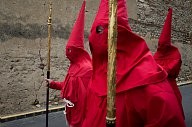
Procession of "Sanch"
Pierre Berthuel / Le Pictorium
LePictorium_0178704.jpg
The red "Caparutxa" symbolize the regidores "the condemned to death" accompanied by the black "Caparutxa", the penitents.
The cortege of the penitents marches in the city of Perpignan for procession of the Sanch
The cortege of the penitents marches in the city of Perpignan for procession of the Sanch
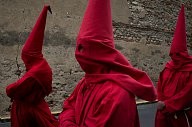
Procession of "Sanch"
Pierre Berthuel / Le Pictorium
LePictorium_0178705.jpg
The red "Caparutxa" symbolize the regidores "the condemned to death" accompanied by the black "Caparutxa", the penitents.
The cortege of the penitents marches in the city of Perpignan for procession of the Sanch
The cortege of the penitents marches in the city of Perpignan for procession of the Sanch

Procession of "Sanch"
Pierre Berthuel / Le Pictorium
LePictorium_0178706.jpg
The red "Caparutxa" symbolize the regidores "the condemned to death" accompanied by the black "Caparutxa", the penitents.
The cortege of the penitents marches in the city of Perpignan for procession of the Sanch
The cortege of the penitents marches in the city of Perpignan for procession of the Sanch
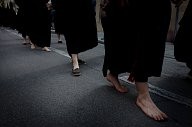
Procession of "Sanch"
Pierre Berthuel / Le Pictorium
LePictorium_0178707.jpg
Some walk bare foot during the marche.
The red "Caparutxa" symbolize the regidores "the condemned to death" accompanied by the black "Caparutxa", the penitents.
The cortege of the penitents marches in the city of Perpignan for procession of the Sanch
The red "Caparutxa" symbolize the regidores "the condemned to death" accompanied by the black "Caparutxa", the penitents.
The cortege of the penitents marches in the city of Perpignan for procession of the Sanch

Procession of "Sanch"
Pierre Berthuel / Le Pictorium
LePictorium_0178708.jpg
Walking bare foot during the marche.
The red "Caparutxa" symbolize the regidores "the condemned to death" accompanied by the black "Caparutxa", the penitents.
The cortege of the penitents marches in the city of Perpignan for procession of the Sanch
The red "Caparutxa" symbolize the regidores "the condemned to death" accompanied by the black "Caparutxa", the penitents.
The cortege of the penitents marches in the city of Perpignan for procession of the Sanch
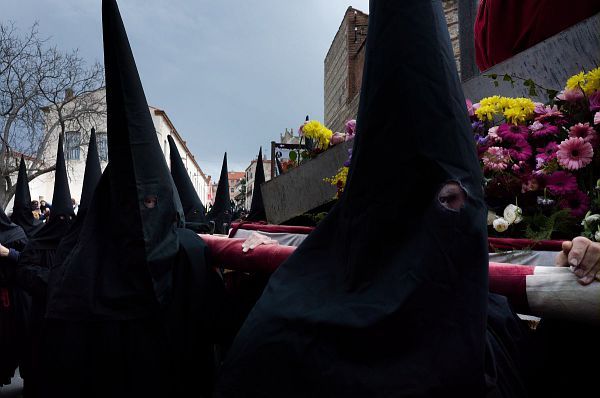
Procession of "Sanch"
Pierre Berthuel / Le Pictorium
LePictorium_0178709.jpg
Penitents are carrying a "Mistéris".
The red "Caparutxa" symbolize the regidores "the condemned to death" accompanied by the black "Caparutxa", the penitents.
The cortege of the penitents marches in the city of Perpignan for procession of the Sanch
The red "Caparutxa" symbolize the regidores "the condemned to death" accompanied by the black "Caparutxa", the penitents.
The cortege of the penitents marches in the city of Perpignan for procession of the Sanch

Procession of "Sanch"
Pierre Berthuel / Le Pictorium
LePictorium_0178710.jpg
The red "Caparutxa" symbolize the regidores "the condemned to death" accompanied by the black "Caparutxa", the penitents.
The cortege of the penitents marches in the city of Perpignan for procession of the Sanch
The cortege of the penitents marches in the city of Perpignan for procession of the Sanch

Procession of "Sanch"
Pierre Berthuel / Le Pictorium
LePictorium_0178711.jpg
Penitents are carrying a "Mistéris"
The red "Caparutxa" symbolize the regidores "the condemned to death" accompanied by the black "Caparutxa", the penitents.
The cortege of the penitents marches in the city of Perpignan for procession of the Sanch
The red "Caparutxa" symbolize the regidores "the condemned to death" accompanied by the black "Caparutxa", the penitents.
The cortege of the penitents marches in the city of Perpignan for procession of the Sanch
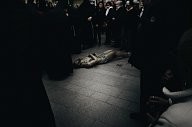
Procession of "Sanch"
Pierre Berthuel / Le Pictorium
LePictorium_0178712.jpg
During the marche, the "Mistéris" of Jesus falls down on the floor and brake apart.
The red "Caparutxa" symbolize the regidores "the condemned to death" accompanied by the black "Caparutxa", the penitents.
The cortege of the penitents marches in the city of Perpignan for procession of the Sanch
The red "Caparutxa" symbolize the regidores "the condemned to death" accompanied by the black "Caparutxa", the penitents.
The cortege of the penitents marches in the city of Perpignan for procession of the Sanch
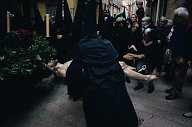
Procession of "Sanch"
Pierre Berthuel / Le Pictorium
LePictorium_0178713.jpg
The est remit sur son socle of Jesus is put back on the pedestal. The red "Caparutxa" symbolize the regidores "the condemned to death" accompanied by the black "Caparutxa", the penitents.
The cortege of the penitents marches in the city of Perpignan for procession of the Sanch
The cortege of the penitents marches in the city of Perpignan for procession of the Sanch
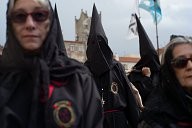
Procession of "Sanch"
Pierre Berthuel / Le Pictorium
LePictorium_0178714.jpg
The red "Caparutxa" symbolize the regidores "the condemned to death" accompanied by the black "Caparutxa", the penitents.
The cortege of the penitents marches in the city of Perpignan for procession of the Sanch
The cortege of the penitents marches in the city of Perpignan for procession of the Sanch

Procession of "Sanch"
Pierre Berthuel / Le Pictorium
LePictorium_0178715.jpg
The red "Caparutxa" symbolize the regidores "the condemned to death" accompanied by the black "Caparutxa", the penitents.
The cortege of the penitents marches in the city of Perpignan for procession of the Sanch
The cortege of the penitents marches in the city of Perpignan for procession of the Sanch
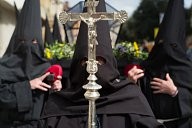
Procession of "Sanch"
Pierre Berthuel / Le Pictorium
LePictorium_0178716.jpg
The red "Caparutxa" symbolize the regidores "the condemned to death" accompanied by the black "Caparutxa", the penitents.
The cortege of the penitents marches in the city of Perpignan for procession of the Sanch
The cortege of the penitents marches in the city of Perpignan for procession of the Sanch
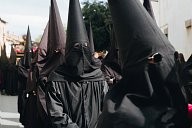
Procession of "Sanch"
Pierre Berthuel / Le Pictorium
LePictorium_0178717.jpg
The red "Caparutxa" symbolize the regidores "the condemned to death" accompanied by the black "Caparutxa", the penitents.
The cortege of the penitents marches in the city of Perpignan for procession of the Sanch
The cortege of the penitents marches in the city of Perpignan for procession of the Sanch
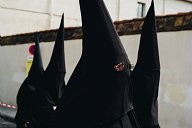
Procession of "Sanch"
Pierre Berthuel / Le Pictorium
LePictorium_0178718.jpg
The red "Caparutxa" symbolize the regidores "the condemned to death" accompanied by the black "Caparutxa", the penitents.
The cortege of the penitents marches in the city of Perpignan for procession of the Sanch
The cortege of the penitents marches in the city of Perpignan for procession of the Sanch
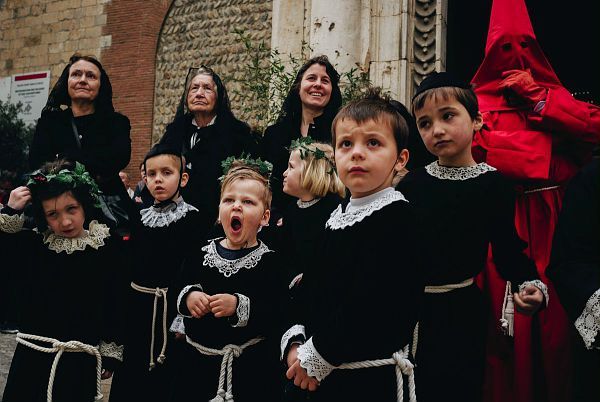
Procession of "Sanch"
Pierre Berthuel / Le Pictorium
LePictorium_0178719.jpg
The children watch the procession of penitents pass through the streets of Perpignan.
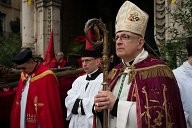
Procession of "Sanch"
Pierre Berthuel / Le Pictorium
LePictorium_0178720.jpg
The senior officials of the church of Perpignan.
The cortege of the penitents marches in the city of Perpignan for procession of the Sanch
The cortege of the penitents marches in the city of Perpignan for procession of the Sanch
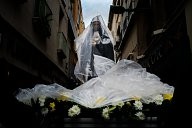
Procession of "Sanch"
Pierre Berthuel / Le Pictorium
LePictorium_0178721.jpg
A "Mistery" of Mary covered with a plastic to protect it from the rain.
The cortege of the penitents marches in the city of Perpignan for procession of the Sanch
The cortege of the penitents marches in the city of Perpignan for procession of the Sanch
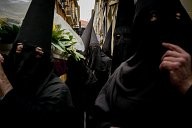
Procession of "Sanch"
Pierre Berthuel / Le Pictorium
LePictorium_0178722.jpg
The black "Caparutxa", the penitents who carry a "Misteris" and accompany the "caparutxa" red the regidores.
The cortege of the penitents marches in the city of Perpignan for procession of the Sanch.
The cortege of the penitents marches in the city of Perpignan for procession of the Sanch.

Procession of "Sanch"
Pierre Berthuel / Le Pictorium
LePictorium_0178723.jpg
The medics during the marche.
The cortege of the penitents marches in the city of Perpignan for procession of the Sanch
The cortege of the penitents marches in the city of Perpignan for procession of the Sanch

Procession of "Sanch"
Pierre Berthuel / Le Pictorium
LePictorium_0178724.jpg
Barefoot the penitents walk in the streets of Perpignan. The red "Caparutxa" symbolize the regidores "the condemned to death" accompanied by the black "Caparutxa", the penitents.
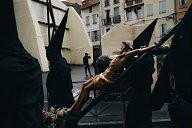
Procession of "Sanch"
Pierre Berthuel / Le Pictorium
LePictorium_0178725.jpg
The red "Caparutxa" symbolize the regidores "the condemned to death" accompanied by the black "Caparutxa", the penitents.
The cortege of the penitents marches in the city of Perpignan for procession of the Sanch
The cortege of the penitents marches in the city of Perpignan for procession of the Sanch
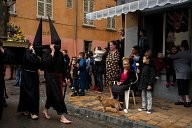
Procession of "Sanch"
Pierre Berthuel / Le Pictorium
LePictorium_0178726.jpg
The black caparutxa pass in the gypsy district of Perpignan.
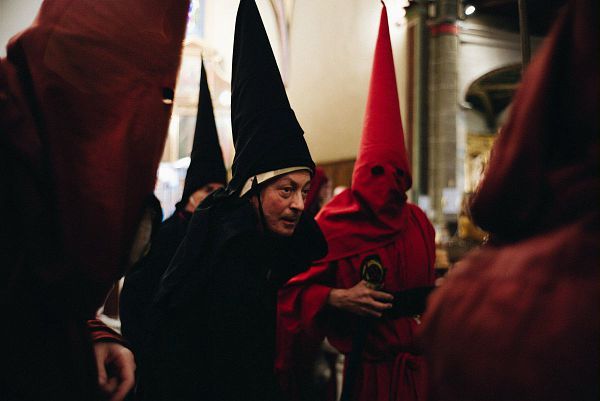
Procession of "Sanch"
Pierre Berthuel / Le Pictorium
LePictorium_0178727.jpg
End of the march, the masks are falling.
The red "Caparutxa" symbolize the regidores "the condemned to death" accompanied by the black "Caparutxa", the penitents.
The cortege of the penitents marches in the city of Perpignan for procession of the Sanch
The red "Caparutxa" symbolize the regidores "the condemned to death" accompanied by the black "Caparutxa", the penitents.
The cortege of the penitents marches in the city of Perpignan for procession of the Sanch

Procession of "Sanch"
Pierre Berthuel / Le Pictorium
LePictorium_0178728.jpg
The red "Caparutxa" symbolize the regidores "the condemned to death" accompanied by the black "Caparutxa", the penitents.
The cortege of the penitents marches in the city of Perpignan for procession of the Sanch
The cortege of the penitents marches in the city of Perpignan for procession of the Sanch
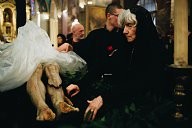
Procession of "Sanch"
Pierre Berthuel / Le Pictorium
LePictorium_0178729.jpg
End of the walk and return to the church, a lady notes the damage.
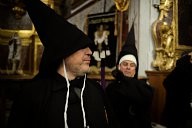
Procession of "Sanch"
Pierre Berthuel / Le Pictorium
LePictorium_0178730.jpg
The black "Caparutxa", the penitents back from the march.
Procession of the Sanch in Perpignan.
Procession of the Sanch in Perpignan.

Procession of "Sanch"
Pierre Berthuel / Le Pictorium
LePictorium_0178731.jpg
The "Misteris" are stored and protected with plastic until next year.
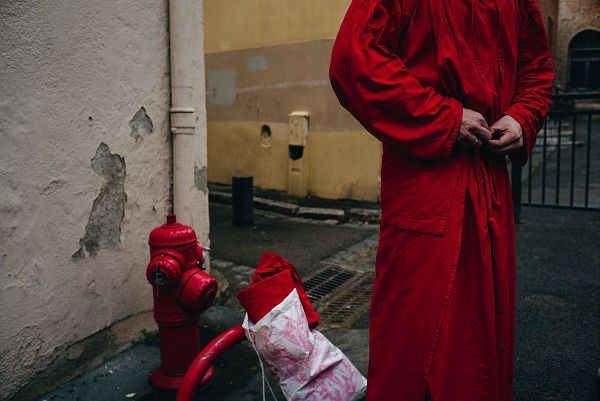
Procession of "Sanch"
Pierre Berthuel / Le Pictorium
LePictorium_0178732.jpg
A red "Caparutxa", a "regidore" a sentenced to death removed his costume after the marche..

Procession of "Sanch"
Pierre Berthuel / Le Pictorium
LePictorium_0178733.jpg
A red "Caparutxa", a "regidore" a sentenced to death removed his costume after the marche..

Procession of "Sanch"
Pierre Berthuel / Le Pictorium
LePictorium_0178734.jpg
The "Misteris" are returned to the church, protected from plastic to be reused next year.
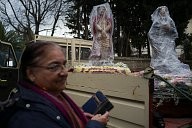
Procession of "Sanch"
Pierre Berthuel / Le Pictorium
LePictorium_0178735.jpg
The "Misteris" are returned to the church, protected from plastic to be reused next year.
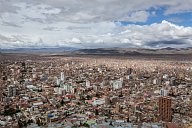
Bolivia - Oruro Carnival
Chris Huby / Le Pictorium
LePictorium_0173997.jpg
February 2017 - Bolivia / Oruro - VIEWPOINT ON THE CITY - Oruro is a city in Bolivia, the capital of the department of Oruro and the capital of the province of Cercado. It is located between the two capitals of the country: 197 km southeast of La Paz and 230 km northwest of Sucre, near the banks of Lake Uru Uru. Its population was 201,230 in 2005 - The Oruro Carnival is Bolivia's largest annual cultural event. Carnival celebrated in the city of Oruro, the capital of folklore of the country, it is part of the festival Ito in honor of the Uru people. "The Oruro Carnival" was inscribed in 2008 by UNESCO on the Representative List of the Intangible Cultural Heritage of Humanity.
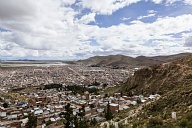
Bolivia - Oruro Carnival
Chris Huby / Le Pictorium
LePictorium_0173998.jpg
February 2017 - Bolivia / Oruro - VIEWPOINT ON THE CITY - Oruro is a city in Bolivia, the capital of the department of Oruro and the capital of the province of Cercado. It is located between the two capitals of the country: 197 km southeast of La Paz and 230 km northwest of Sucre, near the banks of Lake Uru Uru. Its population was 201,230 in 2005 - The Oruro Carnival is Bolivia's largest annual cultural event. Carnival celebrated in the city of Oruro, the capital of folklore of the country, it is part of the festival Ito in honor of the Uru people. "The Oruro Carnival" was inscribed in 2008 by UNESCO on the Representative List of the Intangible Cultural Heritage of Humanity.
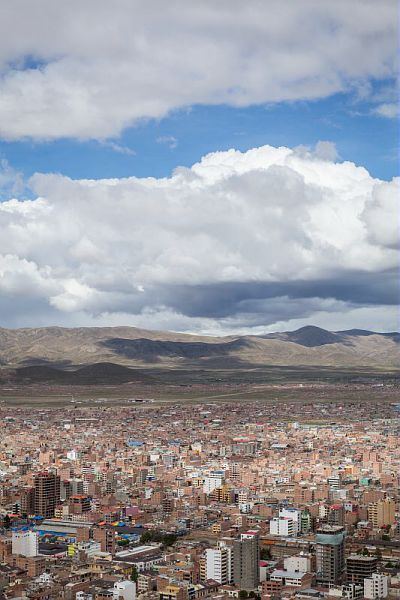
Bolivia - Oruro Carnival
Chris Huby / Le Pictorium
LePictorium_0173999.jpg
February 2017 - Bolivia / Oruro - VIEWPOINT ON THE CITY - Oruro is a city in Bolivia, the capital of the department of Oruro and the capital of the province of Cercado. It is located between the two capitals of the country: 197 km southeast of La Paz and 230 km northwest of Sucre, near the banks of Lake Uru Uru. Its population was 201,230 in 2005 - The Oruro Carnival is Bolivia's largest annual cultural event. Carnival celebrated in the city of Oruro, the capital of folklore of the country, it is part of the festival Ito in honor of the Uru people. "The Oruro Carnival" was inscribed in 2008 by UNESCO on the Representative List of the Intangible Cultural Heritage of Humanity.
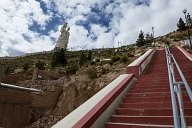
Bolivia - Oruro Carnival
Chris Huby / Le Pictorium
LePictorium_0174000.jpg
February 2017 - Bolivia / Oruro - VIRGIN VIEW on the highest hill in the city - The Oruro Carnival is Bolivia's largest annual cultural event. Carnival celebrated in the city of Oruro, the capital of folklore of the country, it is part of the festival Ito in honor of the Uru people. Legend has it that in 1789 a fresco of the Virgin Mary miraculously appeared in one of the wells of Oruro's richest silver mine. Since then, the Carnival takes place in honor of the Virgen de la Candelaria (Virgin of the Candlelight Mass) or Virgen del Socavón (Virgin of the Mine). "The Oruro Carnival" was inscribed in 2008 by UNESCO on the Representative List of the Intangible Cultural Heritage of Humanity.
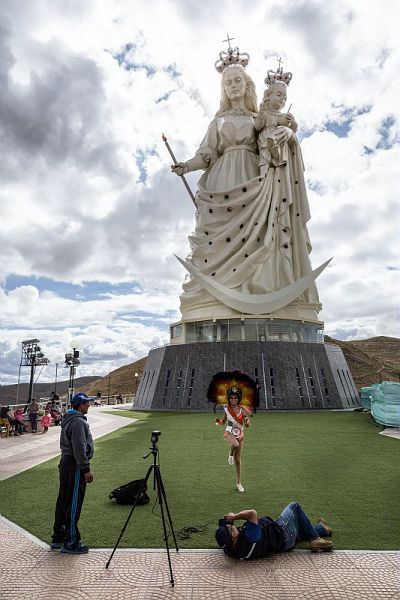
Bolivia - Oruro Carnival
Chris Huby / Le Pictorium
LePictorium_0174001.jpg
February 2017 - Bolivia / Oruro - VIRGIN VIEW on the highest hill in the city - The Oruro Carnival is Bolivia's largest annual cultural event. Carnival celebrated in the city of Oruro, the capital of folklore of the country, it is part of the festival Ito in honor of the Uru people. Legend has it that in 1789 a fresco of the Virgin Mary miraculously appeared in one of the wells of Oruro's richest silver mine. Since then, the Carnival takes place in honor of the Virgen de la Candelaria (Virgin of the Candlelight Mass) or Virgen del Socavón (Virgin of the Mine). "The Oruro Carnival" was inscribed in 2008 by UNESCO on the Representative List of the Intangible Cultural Heritage of Humanity.
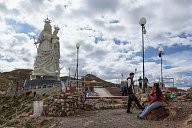
Bolivia - Oruro Carnival
Chris Huby / Le Pictorium
LePictorium_0174002.jpg
February 2017 - Bolivia / Oruro - VIRGIN VIEW on the highest hill in the city - The Oruro Carnival is Bolivia's largest annual cultural event. Carnival celebrated in the city of Oruro, the capital of folklore of the country, it is part of the festival Ito in honor of the Uru people. Legend has it that in 1789 a fresco of the Virgin Mary miraculously appeared in one of the wells of Oruro's richest silver mine. Since then, the Carnival takes place in honor of the Virgen de la Candelaria (Virgin of the Candlelight Mass) or Virgen del Socavón (Virgin of the Mine). "The Oruro Carnival" was inscribed in 2008 by UNESCO on the Representative List of the Intangible Cultural Heritage of Humanity.
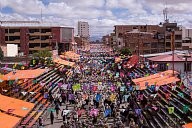
Bolivia - Oruro Carnival
Chris Huby / Le Pictorium
LePictorium_0174003.jpg
February 2017 - Bolivia / Oruro - OVERVIEW OF ORURO STREET AT CARNIVAL - The Oruro Carnival is Bolivia's largest annual cultural event. Carnival celebrated in the city of Oruro, the capital of folklore of the country, it is part of the festival Ito in honor of the Uru people. "The Oruro Carnival" was inscribed in 2008 by UNESCO on the Representative List of the Intangible Cultural Heritage of Humanity.
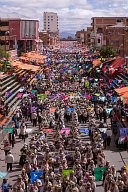
Bolivia - Oruro Carnival
Chris Huby / Le Pictorium
LePictorium_0174004.jpg
February 2017 - Bolivia / Oruro - OVERVIEW OF ORURO STREET AT CARNIVAL - The Oruro Carnival is Bolivia's largest annual cultural event. Carnival celebrated in the city of Oruro, the capital of folklore of the country, it is part of the festival Ito in honor of the Uru people. "The Oruro Carnival" was inscribed in 2008 by UNESCO on the Representative List of the Intangible Cultural Heritage of Humanity.
Next page
